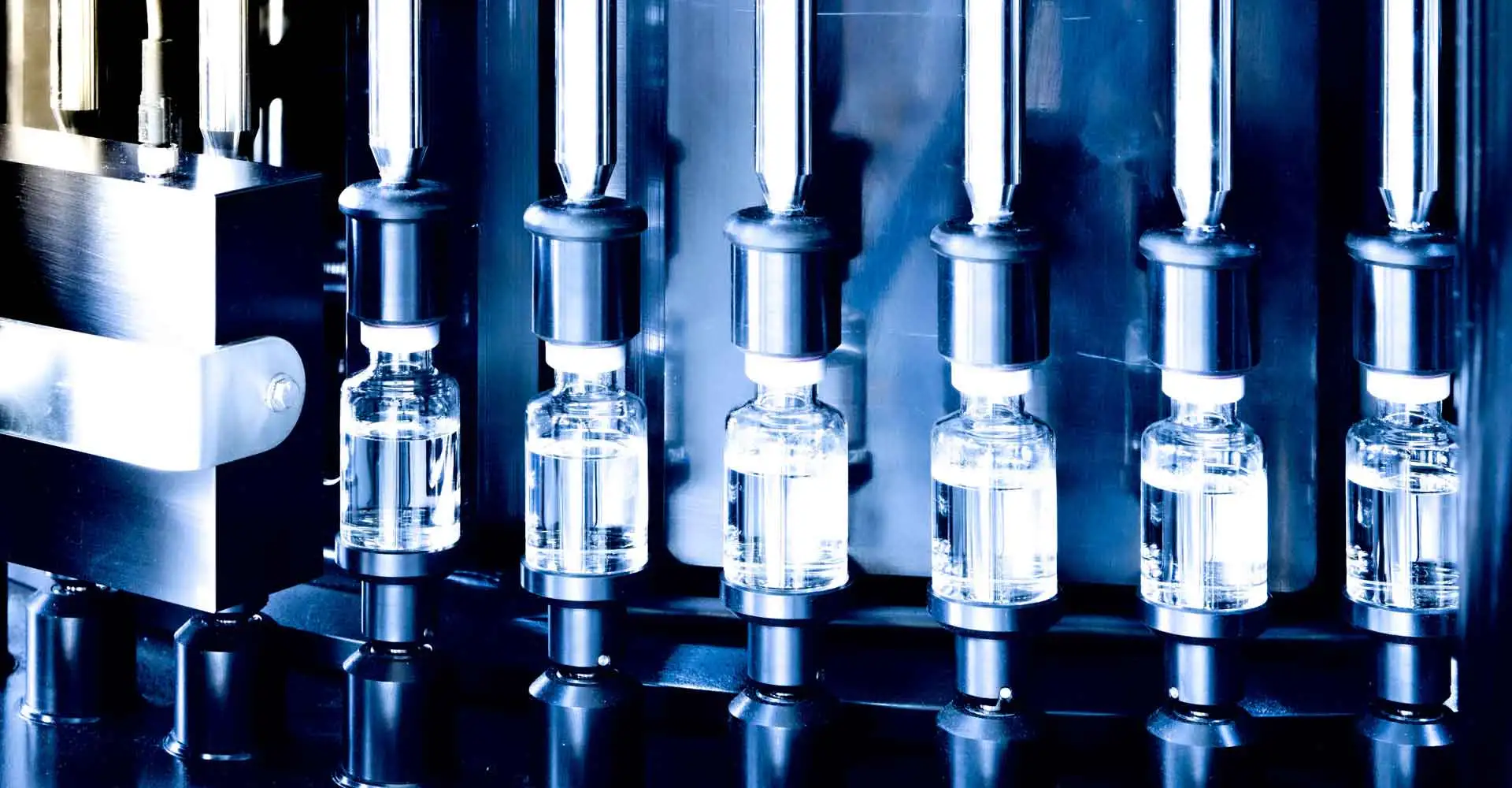Parenteral drug products are required to be 100% visually inspected. As each product and its packaging define their specific inspection task, standardized inspection setups may lead to a high level of false rejects and underperforming inspection results. In contrast, a highly customized solution provides the opportunity to take the camera based inspection to the next level.
Visual inspection for particles and cosmetic defects
Inspection tasks are product and process specific and require an individual treatment in order to achieve the best possible outcome. Our Vision CAV platform for pharmaceutical products is designed for a highly flexible setup allowing the integration of different optical setups.
CosmetiX™ – Inspection of cosmetic defects
For the inspection of cosmetic defects, the test samples are rotated 360°. This allows inspection of cracks, scratches, contaminants and other cosmetic defects on the bottom, vial wall and crimp cap.
ParticleTrack™ – Particle Inspection
Automated particle inspection distinguishes between floating, suspended and settled particles at the bottom. Particles in the liquid are inspected using image subtraction and particle tracking algorithms. Sequences of high resolution images are acquired as the liquid inside the vial rotates, causing potential particles to move. The spinning profile is defined individually for each inspection task and is part of the inspection specification.
OptiX™ - the static optical path
As movements and vibrations may impact image quality and the inspection outcome accordingly, our philosophy is to have no moving parts or components in the optical path meaning that all lightings, optics and cameras are in a fixed position and are neither swiveling nor rotating. OptiX™ is the basis for high-quality image capture and excellent inspection results.

Optical Setup
Our optical setups consist of the latest digital high-speed cameras and lighting components. Light setups and camera types are selected according to the individual inspection task.
For cosmetic defect, inspection samples are rotated by 360°. This allows an inspection for cracks, scratches and other defects on the container wall and closure.
For instance, in certain cosmetic defect inspections, color cameras are used to make cracks visible.


In addition to the inspection of cosmetic defects, automated particle inspection for parenteral drugs is a major task. Typical visible particle types to be inspected are metal, rubber, glass and fibers in the range of 50-70µm. For particle inspection in liquids the particles are set in motion by spinning. Image sequences are then taken and further processed for the identification of particles. For lyophilized products or highly viscous products the spinning may not be applied, and thus other optical setups are put in place.


Our Visual inspection systems provide the following benefits
- Customized optical setup optimized for inspection tasks
- Latest digital camera technology
- Reduction of vibrations throughout the system
- No moving or adjustment of optics required – simple qualification of optical setup
- No dead angles in optical path
- Scalable processing units for a simple upgrade and exchange
- State-of-the-art image processing
Looking for more information about our automated visual inspection capabilities?
Get information directly from our experts.